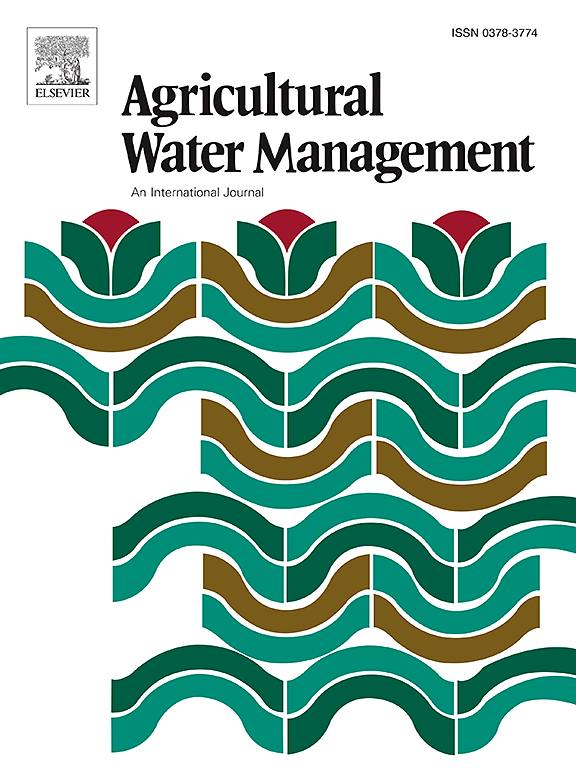Evaluating the impact of floating spheres on evaporation reduction and water salinity control in reservoirs
IF 5.9
1区 农林科学
Q1 AGRONOMY
引用次数: 0
Abstract
The construction of simple reservoirs in arid regions helps meet the water demands for agricultural irrigation, industry, and domestic use, while also alleviating local water shortages and related issues. However, environmental concerns associated with reservoir development are becoming more evident. For instance, the stored water is gradually becoming saline. Studies suggest that reducing water evaporation over extended periods can effectively lower the salt concentration in the water. Currently, there is limited research on salt migration in reservoir water when covered with anti-evaporation materials. Given the potential impact of these materials on the water environment and hydrodynamic conditions, this study seeks to examine the spatiotemporal distribution patterns of reservoir mineralization under such covering. To this end, laboratory and field experiments were conducted to analyze the impact of covering the water surface with floating high-density polyethylene spheres to reduce evaporation and its effect on water salinity. These experiments included monitoring water temperature, dissolved oxygen, pH, sediment resuspension, and water conductivity, as well as calculating the contribution of sediment release and evapotranspiration to the increase in salinity concentration within the water column. This study investigates the role of floating high-density polyethylene (HDPE) spheres in reducing reservoir evaporation and mitigating water salinity. Laboratory and field experiments assessed the effects of different coverage levels (0 %-74.98 %) on evaporation rates, sediment resuspension, and water chemistry. The findings indicate that covering 74.98 % of the reservoir surface led to a 28.97 % reduction in salinity (p < 0.05) over one irrigation cycle. Evaporation inhibition varied from 13.56 % to 60.19 %, depending on coverage. However, floating spheres exhibited reduced effectiveness at high wind speeds (>10.7 m/s), highlighting the need for additional containment strategies. Future research should explore long-term durability, ecological impact, and cost-effectiveness of large-scale deployment.
求助全文
约1分钟内获得全文
求助全文
来源期刊

Agricultural Water Management
农林科学-农艺学
CiteScore
12.10
自引率
14.90%
发文量
648
审稿时长
4.9 months
期刊介绍:
Agricultural Water Management publishes papers of international significance relating to the science, economics, and policy of agricultural water management. In all cases, manuscripts must address implications and provide insight regarding agricultural water management.
 求助内容:
求助内容: 应助结果提醒方式:
应助结果提醒方式:


